Markus Kayser: solar sinter 3D printer
Sep 20, 2019 09:00 PM ET

London-based markus kayser, a masters candidate in design products at the royal college of art, converts the raw resources of sunlight and sand into glass products with his fully automated, solar-powered ‘solar sinter‘ 3D printer.
The device works from the same technique of sintering that is common to most 3D printer processes, heating a powder (here silicia sand) to its melting point and letting it cool and solidify (here into glass). ‘solar sinter’ utilizes the sun’s rays in place of a laser to selectively heat parts of the sand. the device moves automatically, positioning itself in proper focus relative to the sun’s rays; and by continually sweeping new layers of fresh sand over the selectively melted down parts, kayser builds up a 3-dimensional product.
Kayser created and tested a manually operated ‘solar sinter’ in february 2011, before producing the fully automated, computer-driven version depicted here during two weeks of testing in the sahara desert. the machine utilizes replicatorG opensource software.
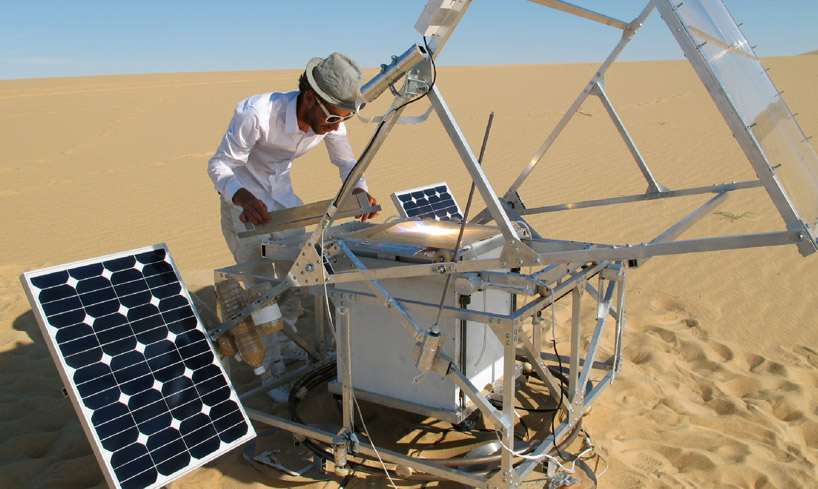
closer view of the device
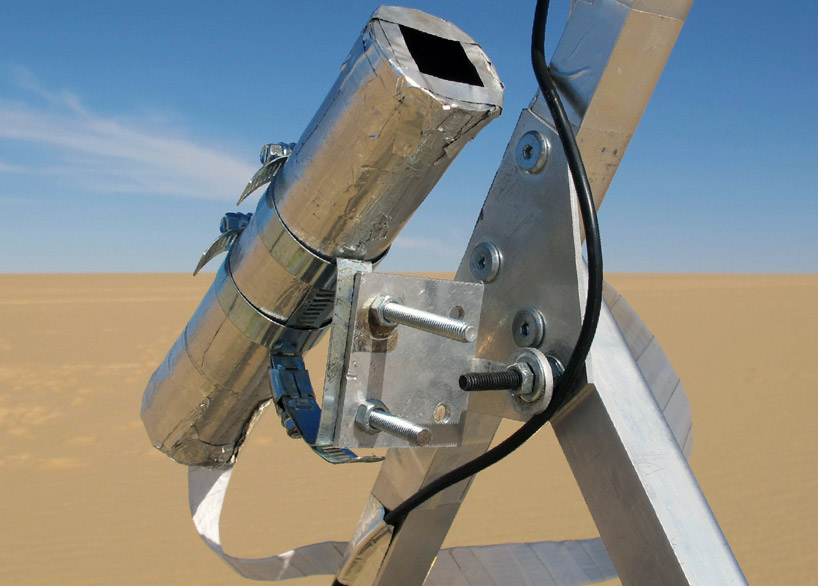
detail view
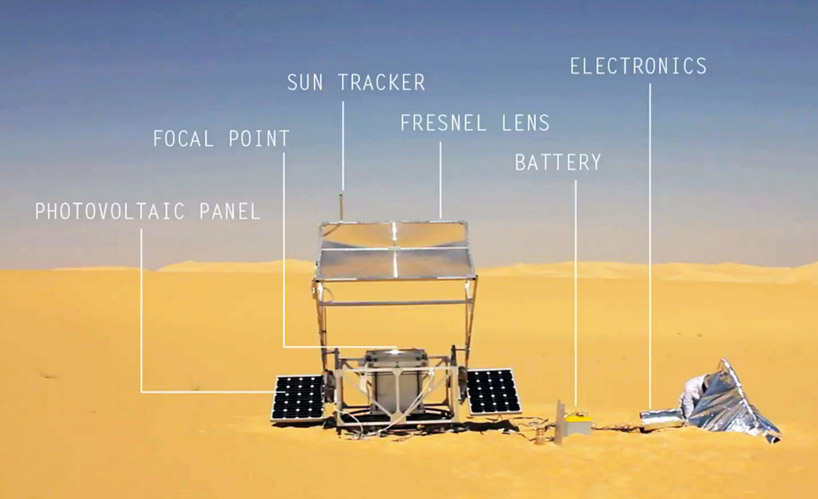
labelled photograph of the machine
Kayser notes: ‘in a world increasingly concerned with questions of energy production and raw material shortages, this project explores the potential of desert manufacturing, where energy and material occur in abundance. the machine represent[s] the initial significant steps towards what I envisage as a new solar-powered production tool of great potential.‘
‘Solar sinter’ can be seen at the royal college of art graduate exhibitions 2011, running now through july 3rd.

view of the sand being heated to melting by the focused rays of sunight
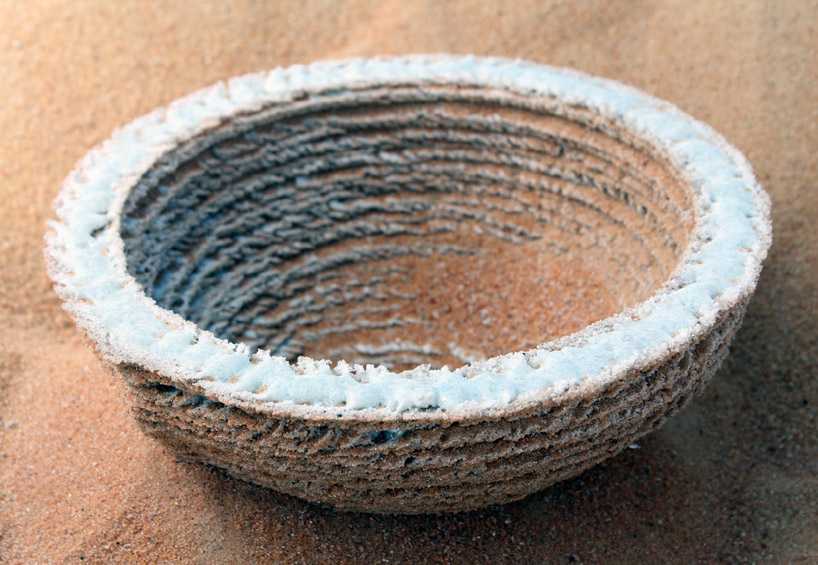
a bowl created using ‘solar sinter’
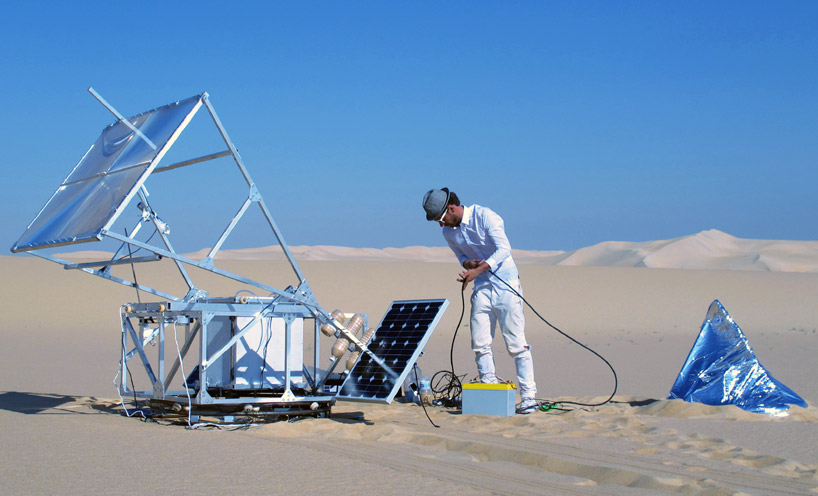
kayser setting up ‘solar sinter’ for testing in the sahara desert
Also read


